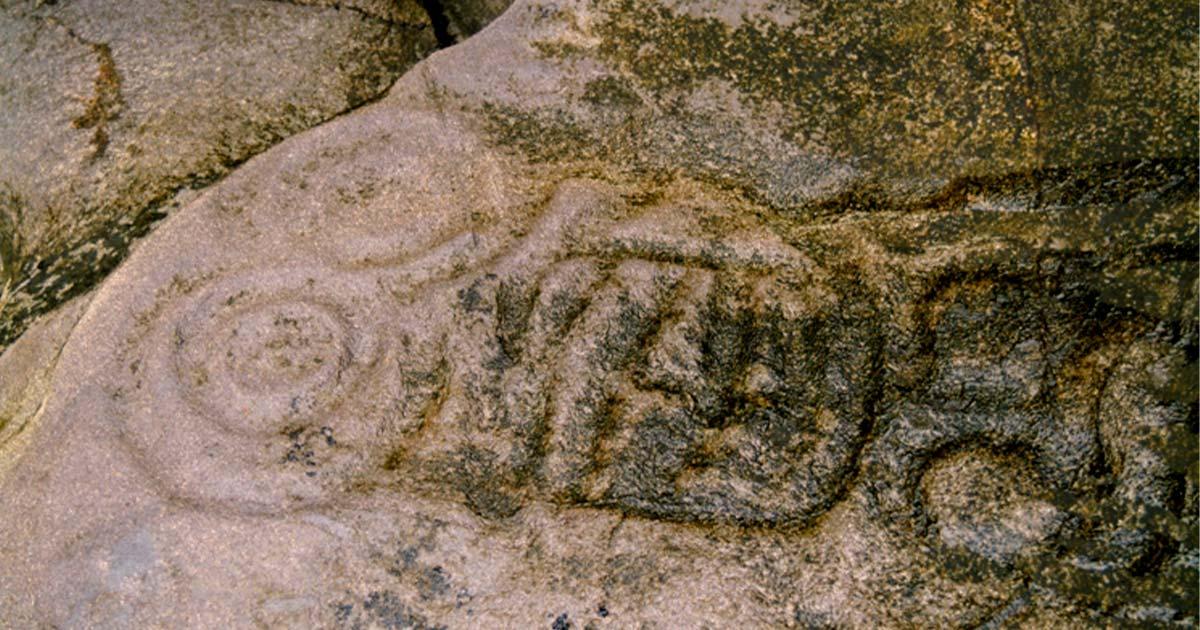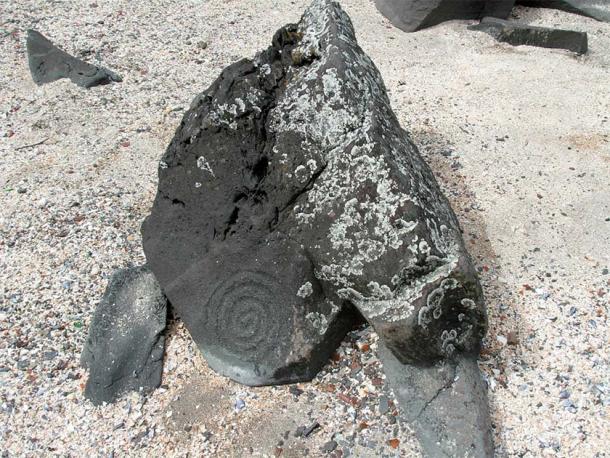
The Continuing Enigma of the Petroglyph Beach in Wrangell, Alaska
The wild and enigmatic northern regions of North America have always been a place of great mystery. The wild beauty of Alaska, of Canada’s vast northern provinces, and their tranquil coastal areas, always captivated the attention of explorers and adventurers. History here is rich too, with many venerated native tribes leaving their important mark on the land. But one historic remnant did stir the imagination of scholars, and proved to be a bit of an enigma. The so-called Petroglyph Beach at Alaska’s city of Wrangell is an intriguing insight into the oldest traces of human habitation in the area. What is more, it has one of the highest concentrations of intricate rock carvings in North America - and in the world too. Who left these marks, and why?
- Rare petroglyphs uncovered by freak weather in Hawaii
- 13,800-year-old Haida site found underwater in Canada
The Enigma of the Petroglyph Beach in Wrangell
Wrangell, located along the important Inside Passage coastal route, is a small and tranquil coastal fishing city in Alaska. Before the European settlers arrived, the area had been the home of the Tlingit native tribe for thousands of years and their identity is still strong in this region. This is an area of exceptional beauty, with some of the last true wilderness left in the world. With rugged mountains and lush boreal forests, rocky peaches and crowded archipelagos, this coastal area of Alaska is captivating with its primal beauty.
Wrangell, however, is a simple town of some 2,500 inhabitants, centered on its traditional fishing industry. Yet it hides something quite unique. Just a mile out of town, after a pleasant hike, one can stumble upon the enigmatic Petroglyph Beach, the coast whose jagged rocks are dotted with numerous intricate stone carvings. Easily spotted above and below the mean high tide, these carvings vary from simple and crude, to detailed and captivating. A petroglyph is a carving made in stone, and it is one of the oldest forms of expression, found all across the world.
But they are seldom found in such dense concentration at a single place, especially in North America. Petroglyph Beach at Wrangell contains between 40 and 50 carvings, most of them well preserved. And scholars propose that they are up to 8,000 years old! Did the Tlingit natives carve them? Or some inhabitants much older than them?

Petroglyph beach, Wrangell, Alaska. (brewbooks/CC BY-NC-SA 2.0)
A Vestige of Alaska’s Oldest Inhabitants?
It is not known for certain who etched these intricate carvings. As they are estimated to be 8,000 years old, they could have been made by regional inhabitants that predated the Tlingit. The Tlingit oral stories tell of their sacred protector animal, the Raven, who saved children from a great flood. But of their exact emergence as a distinct cultural group, nothing can be said with absolute certainty. There are, however, several theories that are connected to the creation of the designs at Petroglyph Beach in Wrangell.

Bill Reid's Raven and the First Men (1980), UBC Museum of Anthropology, depicts a scene from the Haida creation myth. The Raven represents both the creator and trickster figures, common to many mythologies. ( D. Gordon E. Robertson/CC BY-SA 3.0)
One theory proposes that they were made by the Haida people, whose ancestors dwelt on the nearby Haida Gwaii islands for as long as 13,000 years. The Haida likely developed the use of canoes around 8,000 years BP, and could have sailed the 300 miles (482 km) distance towards Wrangell, carving the images in the process.
Another theory states that it was some entirely different cultural group that carved these images, predating the emergence of both the Haida and the Tlingit. Could it have been the very first Paleoindians that entered into the area? We might never know for certain. The imagery, however, shares the elements of all the above theories: there are the styles popular with both the Tlingit and the Haida, but also the more primitive and crude designs of much older cultures.
- Oldest human footprints yet discovered in North America found in British Columbia
- Was there a Common Writing System used by Pacific Islanders?
Designs That Reflect Alaskan Nature
Amongst the various petroglyphs, there are many different designs. Some are simple spirals, circles, dots, and squares - miscellaneous symbols whose significance remains a mystery. But there are those that are much more complex. Artistic carvings of killer whales, salmon, ravens, birds, fish, and many other creatures can also be seen. For the local native tribes, these animals always had a great importance, often being the difference between life and death. The designs are best observed just before sunset, when the light washes over them, and the light water spray gives them a sparkling shine.
Still, due to the age and the coastal erosion, some of the petroglyphs are now below the waterline. They can be observed in detail only at low tide. Nevertheless, all of these carvings are a wonderful glimpse into the cultural development of this wild region of coastal Alaska. But their age and enigma are still a big question mark in the scientific community that is still trying to understand their true origins.
Even modern Tlingit scholars are puzzled by the meaning of the carvings, which most certainly predate the earliest emergence of this Native tribe. But this only goes to show us that the pre-European history of Alaska, and North America as a whole, is full of mystery and unsolved riddles, with ancient peoples whose histories are lost to time.
Top image: Ancient Alaskan Petroglyphs in Stone. Some of the best surviving examples of native artistic expression are petroglyphs found in southeast Alaska. Source: LoweStock/Adobe Stock
References
Bywater, S. 2023. Petroglyph Beach in Wrangell, Alaska - Everything We Know. Available at: https://pacificupperleft.com/petroglyph-beach-wrangell-alaska/
Nalewicki, J. 2023. The Mystery of This Petroglyph-Covered Alaskan Beach. Available at: https://www.smithsonianmag.com/travel/the-mystery-of-this-petroglyph-covered-alaskan-beach-180981858/
Readicker-Henderson, E. and Readicker-Henderson, L. 2002. The Inside Passage and Coastal Alaska. Hunter Publishing.
















Comments
Turn it on its side.. looks kind of like a being in a space suit to me.. you can even see the hand off to one side waving.. But what do I know I'm crazy
infinitesimal waveparticles comprise what we call home the earth
manipulatable by thought ability supressed in humans since birth
They use them to draw tourists. so hmmm. What type of metal, or grinder wheel, would be required to carve stone like that?
Nobody gets paid to tell the truth.
Delete this (duplicate).
Nobody gets paid to tell the truth.